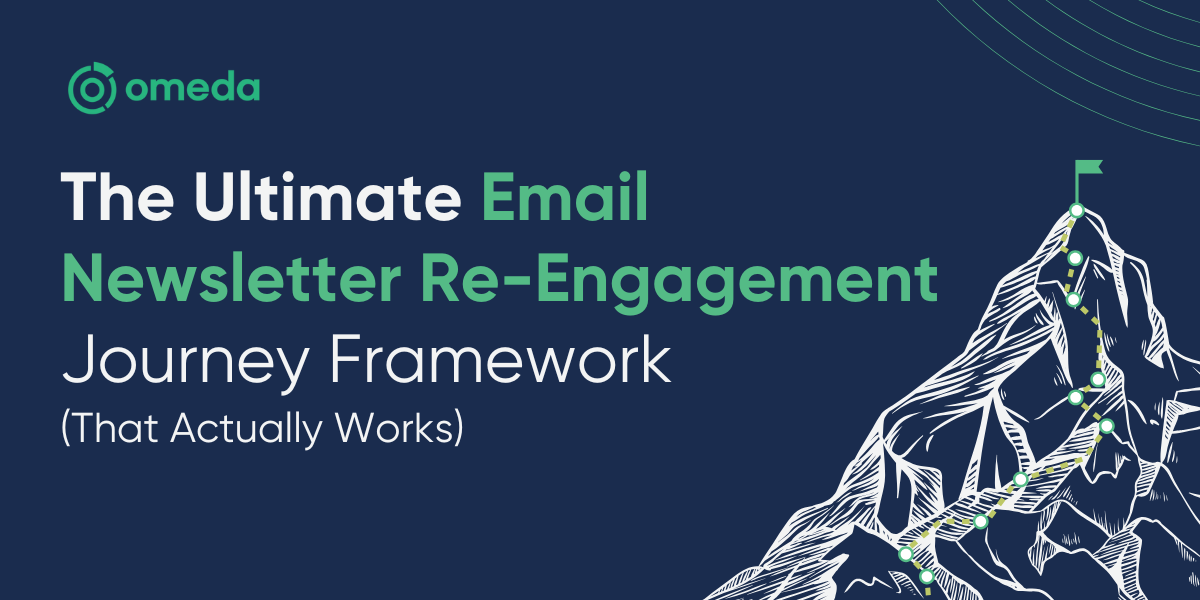Media’s back to the future moment
Back to basics

We tried something new yesterday. We partnered with Omeda to gather 20 publishing executives for a private roundtable on the topic of using AI to inform audience-data strategies. I prefer these to be open discussions, so they’re done under the Chatham House Rule.
We heard about how publishers are using AI to enhance content production, personalize user experiences, and improve audience targeting, with efforts ranging from algorithmic recommendations to real-time campaign optimization. The challenge: many are grappling with fragmented data systems and outdated infrastructure that limit the ability to translate audience insights into business results.
The kind of wholesale change in these organizations is difficult to pull off within fragmented businesses. One exec discussed struggling with outdated infrastructure and underutilized tools that hinder effective audience data collection and activation. Change requires getting around siloed systems and legacy tech. Thanks to Omeda for its partnership in bringing this group together for an important conversation.
Couple other things
- We are conducting research about how publishers organize for a “total monetization” approach to make more money out of fewer visitors to their properties. Take the survey.
- Next week, on July 30 at 1pmET, Forbes chief chief innovation officer Nina Gould, is joining me and BlueConic’s Matt Jarman to detail how Forbes has embarked on gaining a unified view of its audience. This is the kind of foundational audience work that’s sorely needed. Register for the TRB Online Forum here.

Traffic is dropping; your engagement doesn’t have to

Traffic is dropping, but the good news is that you already have everything you need to win back inactive newsletter subscribers and improve your audience retention.
In Omeda's Ultimate Email Newsletter Re-Engagement Journey Framework, you’ll learn how to shape your strategy by identifying and segmenting inactive subscribers, mapping out a re-engagement email sequence (with examples!), plus how to optimize, measure, and suppress.
Take advantage of the audience you already won and get the guide today.
Back to the future
The media business is currently living through the cliche of changing coming slowly and then all at once. The current crisis facing the scaled media business is beyond shifting distribution patterns and even economics. It’s a product crisis. Washington Post CEO Will Lewis lacked tact when he told staff “nobody is reading your stuff,” but he also hit on a harsh marketplace reality.
AI is a handy boogeyman that will be trotted out as cover for overhauls, just in the same way Covid was used as an excuse. AI is an accelerant of dynamics that have been in play since the start of the internet and destruction of the scarcity economics that underpinned the media business.
What’s fascinating about this moment – and it’s painful, without a doubt – is in finding a path forward, big media companies are in many ways returning to the past. There’s an emerging consensus that the path forward has key elements:
Going post-text. I’m a words person. My career was built on producing words or coaxing them out of others and then asking them on Slack when they’ll file. I am not optimistic about the economic future of putting words on webpages. The data is coming in. To paraphrase the great Dennis Green, the AI Overviews are who we thought they were. Pew found search results with AI Overviews lead to roughly half as many clicks. The efforts around pay-per-crawl are sensible and needed, yet until a price is placed on text content in a marketplace, I will be skeptical the economics will be anything other than brutal for words. Newsletters will not be immune to shifting consumption patterns. AI already makes versioning easy, and it will only get easier. Preferences will shift. Fortune cut 10% of its staff this week with what is a now-standard admission that preferences are shifting to audio, video and in-person gatherings. Text content is simply too easy to commoditize, and AI is the biggest commoditization technology Silicon Valley has yet ginned up.The sheet number of bots is making ad impressions worthless. And Silicon Valley is not going to give up on this agentic vision until they can finally have a bot book a vacation, which for some reason is the Holy Grail when planning a vacation is one task that’s actually quite enjoyable. I hope they get to the curing cancer part soon.
A brand approach. Publications are brands, as much as journalists dislike the term at news organizations. Fortune’s cuts were accompanied by a declaration that it would focus on franchises – Most Powerful Women, etc. This is the standard now for magazine brands that have outlived their original utility. Magazine brands like Fortune, Time and Newsweek are all running a variation of the Forbes playbook. This means being clear you are running a brand, not a magazine, and lean on business lines like lists, events and brand partnerships that are distant cousins of the traffic-and-programmatic approaches that are obsolete. Even digitally native brands are recalibrating. Business news brands like Axios and Business Insider are pivoting to events, inevitably creating the same children’s soccer game dynamic of many publications clumping in one part of the field.
A more-with-less infrastructure. The more-with-less era has been marked by sharp cuts and downsized of superstar salaries. The cancellation of Stephen Colbert’s Late Show has become something of a Rorschach test for the state of the media business. On one side, people will see yet another example of toadying up to Trump. On the other side, there’s the reality that you cannot pay a star $20 million and carry a $100 million budget to lose $40 million for talk show format that is past its due date. The late-night format long ago entered media’s uncanny valley. This show can exist on YouTube without the band or most of the 200 staffers. Otherwise it will not be able to compete in an Information Space where Colbert’s rivals aren’t Jimmy Fallon and Jimmy Kimmel but YouTubers, TikTokers and whatever else is in a feed that operate with a fraction of the cost base. Conan made the independent path work, and the big checks top podcasters get make clear that a star like Colbert will have to take on more risk in the New World.
Wholesale structural change. The Washington Post’s third newsroom has drawn cackles. This week, the Post decided to change course by moving it entirely out of its editorial group and putting it under Suzi Watford, the company’s chief strategy officer. Instead of an editor, the Post is putting WP Ventures under a general manager. This is a noteworthy statement – the most forceful statements are in actions, not words – that the Post’s leadership doesn’t believe the traditional church-and-state organizational structure of a newspaper is capable of competing in a news environment where podcasters are trusted more than news organizations. The third newsroom, aka WP Ventures, will operate without the strictures of keeping commercial interests at arm’s length. It’s reminiscent of how newspapers, like the Post, managed the early transition to the internet by having a separate dot-com operation.
The talent shift. One of the successes of the Post in recent years was how it managed to create a modern approach to TikTok and YouTube with Dave Jorgenson. He’s now off with top video exec Micah Gellman and his deputy Lauren Saks to create their own video company. Someone like Jorgenson could credibly become a Colbert-like figure, although without the band and most of the 200 staffers. I mean, Joe Budden makes $20 million a year. The doom loop for institutional media is if they don’t sort out the economics for talent. Derek Thompson is onto something with his theory about the decline of comedies being tied to economic incentives shifted to reward a Shane Gillis path vs Jim Carrey. (I”m actually OK without Jim Carrey movies, but as Derek says, comedy is subjective.) Skydance even entertaining a $200 million purchase of The Free Press is testament to the power of individual-inflected media. Such a deal – and I don’t think it will or should happen; just do a partnership – would be this moment’s version of Axel Springer’s bonkers premium paid for Business Insider. It is premised on the magnetism of Bari Weiss, who has managed to pull off the exceedingly difficult task of taking a personal brand and converting it into an institutional brand. Most individuals will not pull this off, as media fragments into millions of individuals and a few large organizations.
Thanks for reading. Send me a note with feedback by hitting reply.
For partnership information, see how we work with a broad array of partners that are helping build sustainable media businesses.

